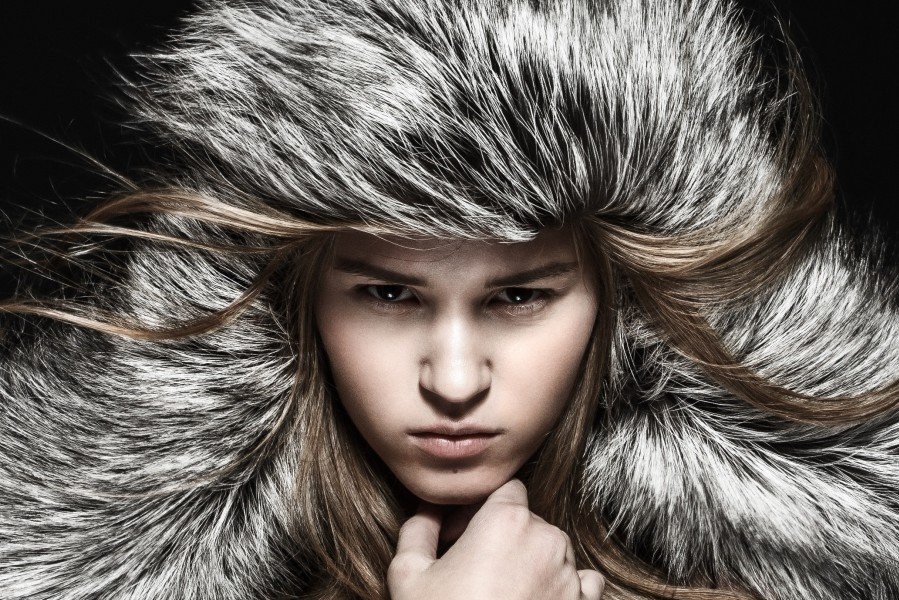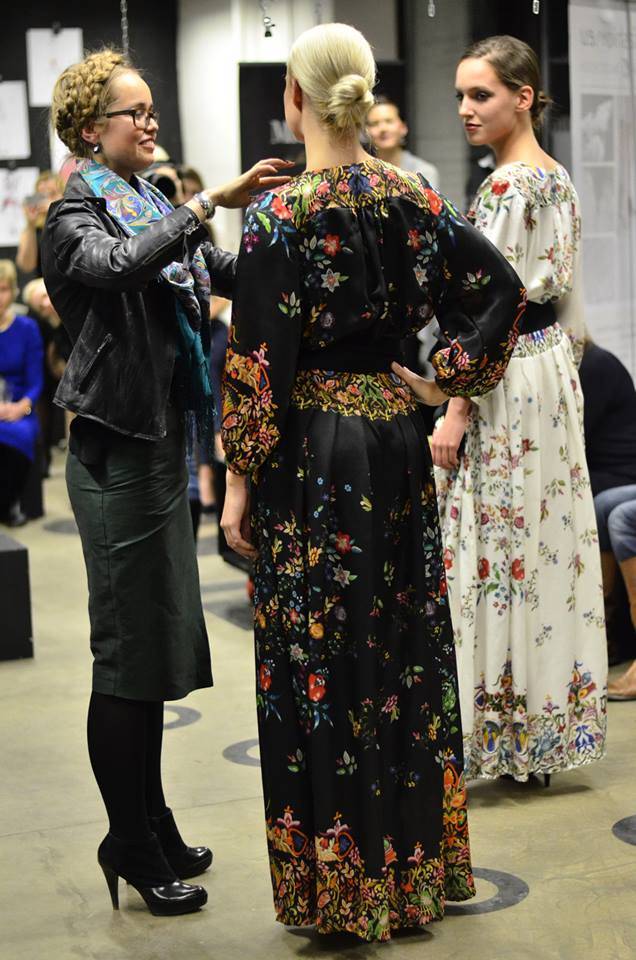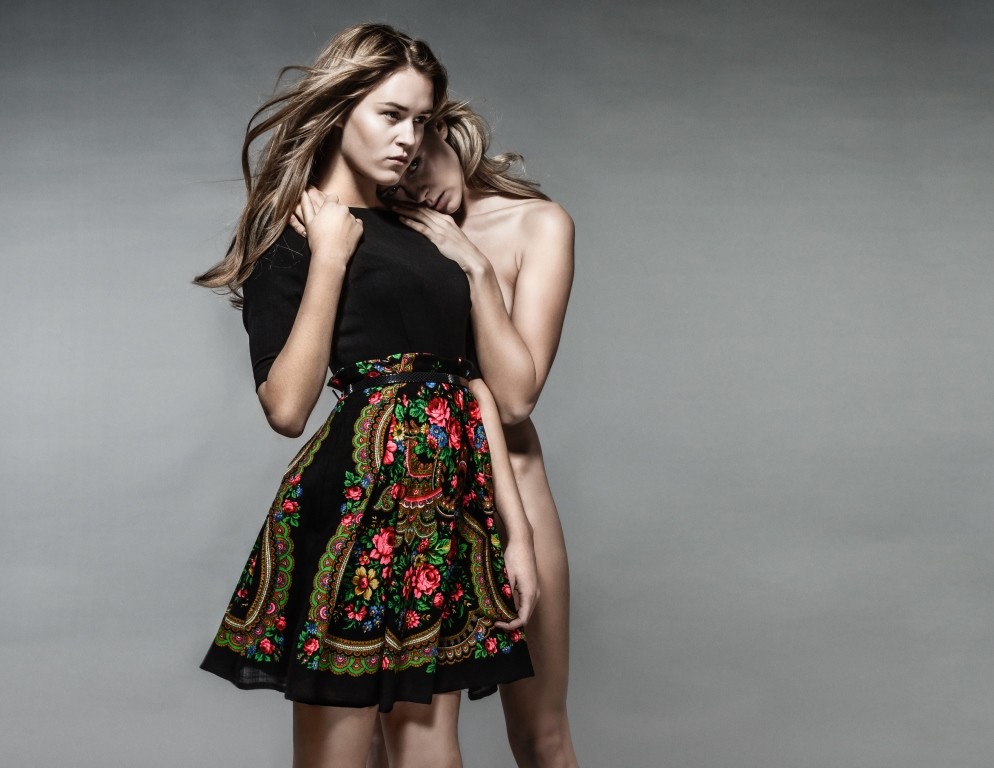The story of Estonian luxury fashion brand Uschanka started when fashion designer Piret Puppart travelled to ancient villages of Siberian reindeer hunters. Puppart became inspired by the beautiful printed shawls and fabrics worn by women who often inherited them from their mothers and grandmothers. She put her ideas to entrepreneurs Grete Kuura and Kati Nikopensius and thus a new brand was born. Now two years old, it sells its products around the world and is just planning an expansion to new markets, including perhaps somewhat surprisingly the Middle East. Brit Tammeorg caught up with the founders to talk about how Uschanka designs its fashion and plans its global expansion.
Let’s start from the beginning: how does an idea turn into actual piece of clothing?
Grete Kuura (GK): Everything starts with inspiration. Uschanka’s head designer Piret Puppart is getting her inspiration from Komi, a small ethnic group living in the very heart of Russia, near the Ural mountains. To reach Komi villages, she needs to travel first by train, then hitchhike and then finally walk. It’s a search; she doesn’t know what kind of inspiration to look for. Usually she knocks on the doors of local women and asks them to show whatever they have in their wardrobe. At first, the ladies are a bit taken back – not many tourists come to their village – but soon they open up and show all the fabrics, embroidery and patterns that they have inherited from their mothers and grandmothers.
After Piret finds the rare fabric that inspires her, which she calls the base fabric, she chooses an accompanying fabric next to it. This fabric is typically ordered from Italy. At the same time, sketches of the garments start to formulate in her head and then these are put on paper.
After the creative part is finished, the business part of the team comes into the game. Kati and I assess the market potential of each garment and calculate the production price, the wholesale price and the retail price. According to the calculations, many pieces in the collections are changed, to be profitable with each product. The prices in the main collection start from €400, whereas the most expensive product sells at €2500.
Kati Nikopensius (KN): After that, patterns of each product are made, samples are produced and these are carefully fitted on a fitting model to provide the perfect fit for each garment. The process is followed by photo shoot. It’s worth to note that the sales process in Uschanka is initiated just after the sketches have been finalised.
You have said before that you are getting help from a very special person during the fitting process. What’s so special about him?
KN: Fitting means everything to us and to our customers. We have been able to attract top talent from Italy to work with us to assure that we achieve perfect fit with our products. The person we work with has very long experience with different luxury brands globally: for example he has built up womenswear production processes at Hugo Boss, Armani and Prada.
GK: I will give you an example to illustrate what exactly fitting is. During our recent business trip to Milan, we were going over some of the products from previous collection and our fitting expert stated: “I see that one shoulder of this dress is three millimeters longer than the other shoulder.” Everyone in the team was speechless, so we took a measuring tool and measured the shoulders. And for our surprise – he was totally correct! If we want to be in the luxury fashion business and be successful, each garment has to fit perfectly on customer. He’s so good that we actually keep his identity confidential.
How did you find your fitting expert?
KN: You might think that it’s extremely difficult to attract talent into your team, but our case proves contrary. We contacted him through LinkedIn and as he really liked our team and he sees potential in Piret as a young designer, he replied instantly. After that we met in London and formalised our collaboration.
How can you afford to keep this kind of specialist?
KN: Everything is possible if you really want it. In the beginning he was just a mentor, but today he has become a full member of our team. In other words, he is a shareholder in the company and he has an opportunity to enjoy the ride with a young and driven team.
How are you financed so far?
KN: As we haven’t taken any private investors on board and have financed the company with our own money, we cannot afford big expenditures. Everything that is connected with graphic design, legal matters, software development, marketing, hair and makeup for photo shoots, we have got pro bono. We work with people who believe in what we do and they think it’s cool. There are many talented young people out there who are willing to help us for free, as in return they receive valuable experience and get to improve their professional portfolios.
GK: Of course we pay for photo shoots, photo editing, product development and production. Sending products to the Philippines, the US, Europe and Scandinavia has proven to be very expensive. These expenditures are covered by our revenue or our Kredex-guaranteed startup loan.
Are there any celebrities wearing Uschanka products?
GK: We are really excited as three top fashion bloggers were wearing Uschanka during the New York Fashion Week. Most known of them would be Rumy Neely. Her blog (fashiontoast.com – Editor) is followed by half of million people all over the globe. Also we are being worn by Zina Charkoplia in Vogue Spain and Laureen Uy in Asia.
In Estonia we are being worn by singers Maarja-Liis Ilus and Lenna Kuurmaa, for example. In Finland, Kiira Korpi, the ice-skating celebrity, is a proud owner of our signature hat.
How did you actually end up in the fashion industry and why?
KN: I have known Piret for years and knew how talented she is, yet she has never wanted to start a business on her own. In September 2012, the three of us decided to start Uschanka and in December same year, we showcased our first collection under the brand.
GK: It all happened really fast. Kati and I did not know much about the industry, as opposed to Piret who had been the head designer for womenswear at Monton (Estonian fashion brand – Editor) for several years. We started without knowing how to sell a collection or which markets we should target and focus on.
How long did it take to get to know the industry?
KN: Half a year. We understood how much production and design are affected by seasons and what kind of strategies we have to implement to approach buyers. The most important lesson we learned is that no matter what, we have to have a showroom present at the Paris Fashion Week. Without that we would not be able to close deals with boutiques that would sell and represent the Uschanka brand. We got into the Creative Door showroom in Paris with our second collection in September 2013.
GK: When we started to communicate with buyers, the knowledge of the industry followed. We learned an important lesson: the boutique buyer is the decision-maker about the collection, it has to fit on its floor among other designers, but the brand has to appeal to the consumers. Therefore our sales efforts are solely towards buyers, all our marketing to end-consumers.
Give me a glimpse of Uschanka’s first year of operations?
KN: In May, while we were planning an autumn-winter collection for 2013, we discovered that other brands were making plans for spring-summer 2014. We decided to skip the winter collection and started making next year’s summer one. This decision saved us a lot of money and enabled us to start following the fashion schedule.
GK: Our first collection was small, featuring only two dresses, gloves and three hat styles. We wanted to test the market, see if the end-consumers liked our patterns and style. We knew it was not sufficient for international markets – too few items for a buyer to represent our brand. Now a complete collection is ten times the size, including colour options.
Did your fingers get burnt in the learning process?
KN: We spent money where it was not necessary – trusted people outside our team, especially regarding sales. For example, we relied on a person representing several brands at the same time. We hoped and waited to get the promised results. In hindsight, sales always have to be within the core of the company! In Uschanka, everyone is selling and earning a percentage on sales.
As you know, there’s a growing concern around the world about the use of real fur as fashion accessories. What would you say to those critics who would like to ban the use of fur as garments?
GK: Yes, we are aware of these concerns and to some extent support them. Still we use real fur. We only use fur that comes either from forests (since in Estonia the government has quotas for hunters to regulate fox population for ecological reasons, certain amount of foxes are hunted every year) or from regulated European fur farms with a high degree of regulation of their practices.
The known brands in fashion are bigger, more experienced and known. What are your strengths?
GK: Fortunately, our direct competitors are not big brands but rather emerging designers, whom we compete with for floor space in multi-brand boutiques. The buyers and end-customers are looking for something new, fresh and interesting.
KN: Right now we are feeling strong; there is an interest towards Uschanka all around the world. New and interesting markets for us are Kuwait, Jordan, also Japan and Switzerland. Estonia has never been our target market, although more consumers approach us and we sell well here. We believe in our products and ourselves. To list some of the concrete advantages – our head designer receives her inspiration from something exciting and exotic, which is not available to all; perfect fit and great materials; and our quality and fair production in Estonia.
Do you have a special way of motivating the team, if money is scarce?
GK: Everyone in our team has a certain responsibility and possibility to make decisions. That and growing with a small company gives a unique international experience and a sense of foreign markets. Larger companies often do not offer that.
KN: In Uschanka we celebrate every small win always together. We have a very good connection and trust between all team members. Although that’s not a surprise, we only take on board people who don’t take “no” as an answer, as there’s always some way to get what we want.
I
Tips from the Uschanka team:
– Start with sales in the very beginning of the product development – even if all you have is sketches
– Take on board only people who are entrepreneurial (read: hungry for success) or very experienced in their competence area. All the others leave aside
– Be very demanding towards yourself and ask your partners to meet the same standards
– Do not count on external help, especially in sales. If there are no sales, there is something wrong with your business idea or the business model
– Always add a significant cash buffer to all of your business activities, because expenditures tend to grow bigger compared with the initial plan.
– Communication within the company is the key – information has to flow smoothly to prevent miscommunication and thus loss of valuable time for execution
I
The current article was published in Estonian in Estonian leading management magazine Director.





Looking forward to your great success.